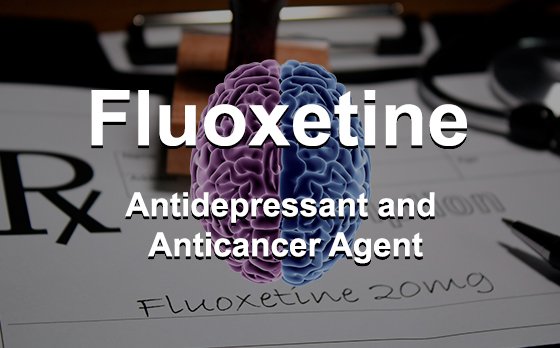Fluoxetine (FLX) is a widely recognized medication for its efficacy in treating depressive and anxiety disorders. Its initial discovery and use focused on regulating serotonin levels in the brain, significantly contributing to the emotional well-being of millions of people. However, over the past few decades, research has revealed an unexpected potential for this drug in areas outside psychiatry, including its apparent anticancer effects. Recent studies suggest that fluoxetine may act on various cellular mechanisms, showing promising effects against several types of tumors. This finding stems from a systematic review of the literature on FLX research for cancer treatment, published by Kadasah and collaborators in the International Journal of Molecular Sciences.
What is drug repurposing?
Drug repurposing involves identifying new applications for drugs already approved for other uses. This approach reduces the risks and time associated with developing new therapies, as the drug’s safety and pharmacokinetic profiles have already been established. A classic example is aspirin, originally an anti-inflammatory drug, now used to prevent cardiovascular problems and even as a potential cancer therapy.
Fluoxetine belongs to the class of selective serotonin reuptake inhibitors (SSRIs). While its primary function is to regulate serotonin levels in the brain, recent studies have shown that it can also target cancer cells in unexpected ways. Below are some of the most notable findings:
Brain tumors:
Fluoxetine can cross the blood-brain barrier, an obstacle that limits the effectiveness of many drugs against glioblastoma, an aggressive type of brain cancer. In combination with temozolomide, a common chemotherapy agent, fluoxetine has shown synergistic effects, improving patient survival. Additionally, it has been found to induce endoplasmic reticulum stress and activate apoptotic proteins such as caspase-3, enhancing its anticancer action.
Breast cancer:
Studies in laboratory models have demonstrated that fluoxetine can overcome drug resistance in breast cancer, enhancing the effects of medications such as doxorubicin. It has also been observed that, when combined with raloxifene, fluoxetine can reduce tumor size and improve the antioxidant status of affected tissues.
Hepatocellular carcinoma (liver cancer):
Fluoxetine has been shown to induce cell death in hepatocellular carcinoma cells by generating reactive oxygen species (ROS) and activating apoptosis (programmed cell death) pathways. Its effects extend to reducing factors associated with metastasis and angiogenesis, such as VEGF and MMP-9.
Colon and cervical cancer:
Combinations of fluoxetine with other treatments have been shown to reduce cell proliferation in colon cancer and increase sensitivity to cisplatin, a drug commonly used against cervical cancer. Additionally, advanced formulations such as fluoxetine nanoparticles have improved its selectivity toward cancer cells.
How does fluoxetine work against cancer?
The exact mechanism of fluoxetine in cancer is still under investigation, but it is known to act independently of its effects on serotonin. Some of its actions include:
– Inhibiting key enzymes for cell proliferation, such as SMPD1, involved in ceramide formation.
– Inducing mitochondrial stress, leading to tumor cell death through the release of apoptotic factors.
– Sensitizing cancer cells to treatments like chemotherapy or radiotherapy by disrupting resistance mechanisms such as MGMT.
– Reducing angiogenesis and metastasis by inhibiting factors like VEGF and MMP-9.

Figure 1. Mechanism of action of fluoxetine and its potential in oncology. In addition to inhibiting serotonin reuptake, fluoxetine has been associated with enzyme inhibition, induction of cellular stress, sensitization of cancer cells, and reduction of metastasis in various types of cancer, including glioblastoma, breast, liver, colon, and cervical cancer.
Although the results are promising, the dose of fluoxetine required to combat cancer is significantly higher than that used for psychiatric disorders, which could lead to severe side effects. Therefore, new formulations, such as nanoparticles and specialized drug delivery systems, are being explored to enhance its efficacy and reduce adverse effects.
Fluoxetine represents an exciting example of how existing drugs can be repurposed to combat complex diseases like cancer. Its action has been tested on a variety of tumors, including glioblastoma, breast, liver, and colon cancers. While further research is still needed, this approach could transform the landscape of cancer therapies in the coming years, offering new hope to patients.
Main Reference:
Kadasah, S. F., Alqahtani, A. M. S., Alkhammash, A., & Radwan, M. O. (2024). Beyond Psychotropic: Potential Repurposing of Fluoxetine toward Cancer Therapy. International Journal of Molecular Sciences, 25(12), 6314. https://doi.org/10.3390/ijms25126314
Other References:
Rascol, O., Fabbri, M., & Poewe, W. (2021). Amantadine in the treatment of Parkinson’s disease and other movement disorders. The Lancet Neurology, 20(12), 1048-1056.
Song, Y., Yang, X., & Yu, B. (2022). Repurposing antidepressants for anticancer drug discovery. Drug discovery today, 27(7), 1924–1935. https://doi.org/10.1016/j.drudis.2021.10.019
de Oliveira, E. A. M., & Lang, K. L. (2018). Drug repositioning: concept, classification, methodology, and importance in rare/orphans and neglected diseases. Journal of Applied Pharmaceutical Science, 8(8), 157-165.


